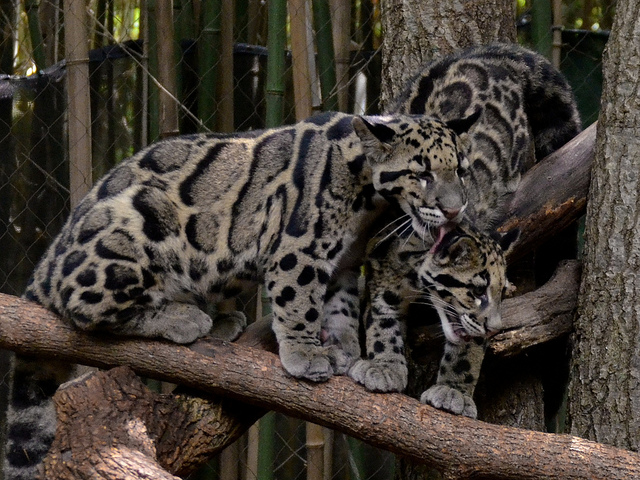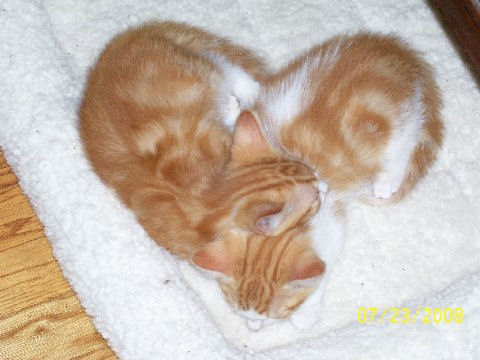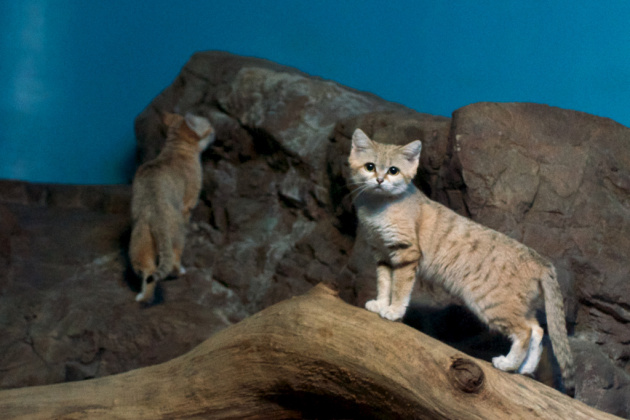by W. Angermeyer
Originally published on our Felids blog February 14, 2013
Before moving on in my series of posts on conservation programs for endangered captive cats, I would like to go in to a bit more depth on the American Association of Zoo’s and Aquariums (AZA) conservation programs to provide some updated information and answer some questions we received.
In the past couple of years, the AZA has made some changes and they are phasing out Population Management Programs (PMPs). All of them have been changed to Species Survival Plans (SSPs) which are now designated as one of three colors: green, yellow and red. If an SSP is green, that means that the population in captivity is predicted to be sustainable with a high percentage of genetic diversity (at least 90%) for at least the next 100 years based on genetic analyses. If an SSP is yellow, then the population of that species in AZA zoos is OK now but is not sustainable. These populations need work if we want the species to persist in zoos long-term. Finally, red SSPs are populations that are nowhere near sustainable (less than 50 individuals with poor genetic diversity) and need a lot of help or may be extinct in zoos in the very near future.
Wild Cats in SSP Programs
Yellow: Caracal, Serval, Amur Leopard, Canada Lynx, Cheetah, Snow Leopard, Ocelot, Puma, Clouded Leopard, Bobcat, Jaguar, Black-footed Cat
Green: Lion,Tiger
Red: Fishing Cat, Sand Cat, Pallas’ Cat
The original purpose of an SSP was to get zoos to communicate and cooperate when managing animals to ensure that the captive population of each species was healthy so zoos weren’t constantly taking animals out of the wild or inbreeding to produce individuals. Genetics certainly played a big role in influencing this purpose. Now the purpose (also genetics driven) is to achieve sustainability within the captive population so that we have healthy populations in the long-term. One reason is to have a reserve of animals to help supplement the wild population in case it is ever necessary. Although zoos and researchers still have much to learn about how to effectively reintroduce animals back into the wild, the possibility to do so is a goal and is a reality for some SSPs such as the Mexican Wolf, Whooping Cranes, Vancouver Island Marmots or the Amur leopard. An SSP species may not be considered endangered in the wild but might require better management in captivity to improve the genetics of the captive population.

Captive individuals that are part of an SSP breeding program may or may not be on public exhibit depending on the availability of space at the institution. A shortage of space tends to be more of an issue with mammalian species. Some institutions do have off-exhibit space and utilize this space as necessary. Whether or not breeding stock will be on exhibit depends on how imperative privacy is for breeding and births. If public display is detrimental, then it will be a priority for off-exhibit space to be created. A lot of species that zoos have had success with breed fine while on exhibit. Each individual animal’s temperament would need to be considered as well. For zoos in temperate or sub-arctic climates, there would also be seasonal considerations and limitations for housing.
It could be said that all AZA institutions participate in all SSP programs because at some point they are likely to communicate about an SSP species such as when they are considering bringing in a new species They must agree to follow the rules of the SSP which vary according to the color designation. For example, all AZA zoos have to follow the breeding and transfer recommendations of a green SSP (however, keep in mind that recommendations are never made without considering the wishes and wellbeing of each zoo). Zoos are not forced to follow the recommendations of yellow or red SSPs if they choose not to, but it is strongly encouraged. Any zoo housing an individual member of an SSP species participates to some degree in the program.
Lastly, there was a question regarding fundraising for SSP animals regardless of whether the institution houses that SSP species. Any zoo may fund raise for any species regardless of whether there is an SSP designation for that species and any SSP can (and with the exception of extenuating circumstances probably will) accept funds raised by anyone regardless of whether they are an AZA accredited organization.

So in short, I guess you can think of the AZA Felid Tag as a very complex and involved dating service for cats. I wonder if there are some cats out on blind dates or taking the plunge in an arranged marriage for Valentine’s Day?
Thanks for providing updated information to:
– Dan Dembiec from the Jacksonville Zoo, Serval SSP Coordinator/Studbook Keeper and a Felid TAG Steering Committee Member
– Pam Pritchard, Animal Collection Specialist at the Calgary Zoo

